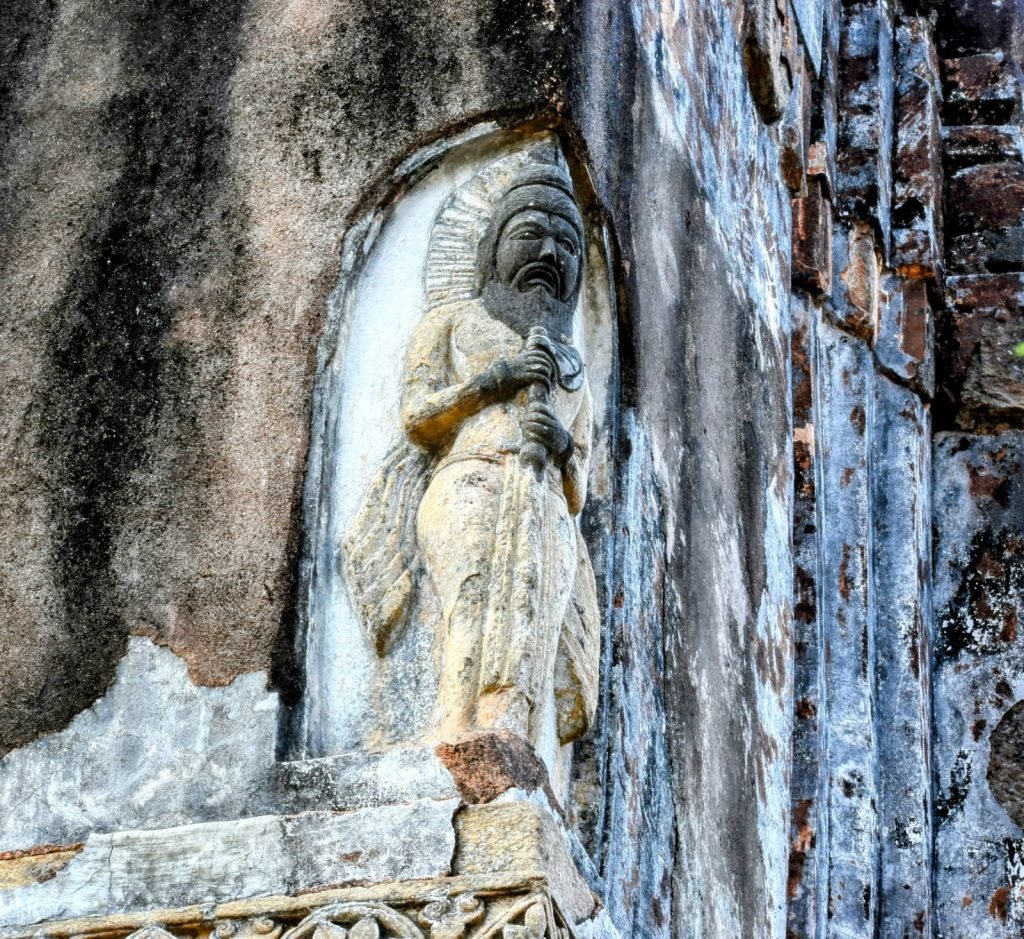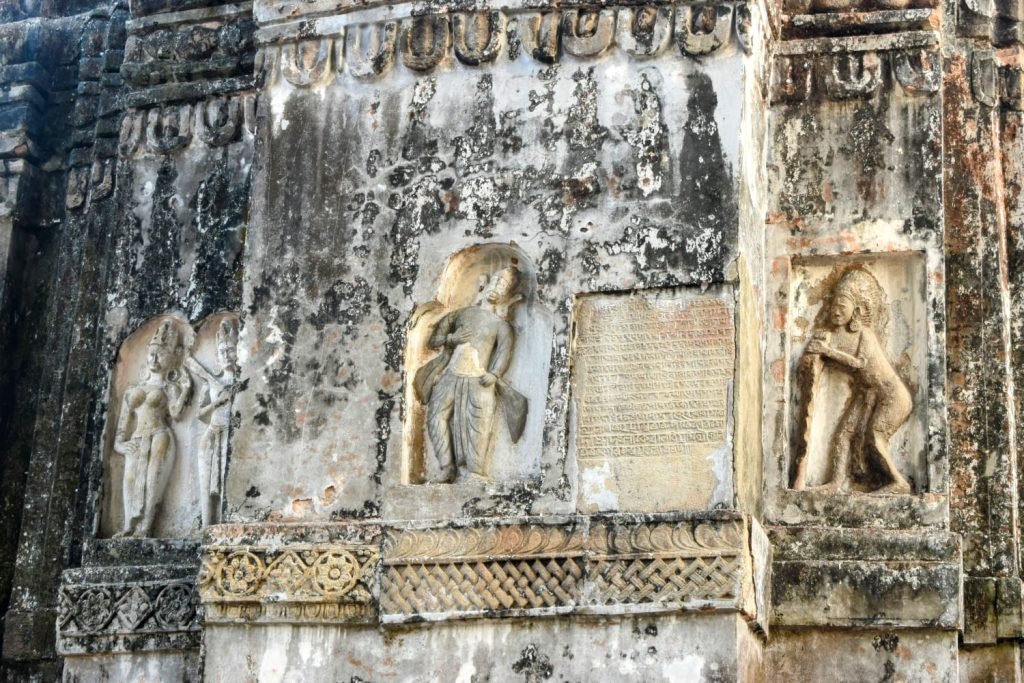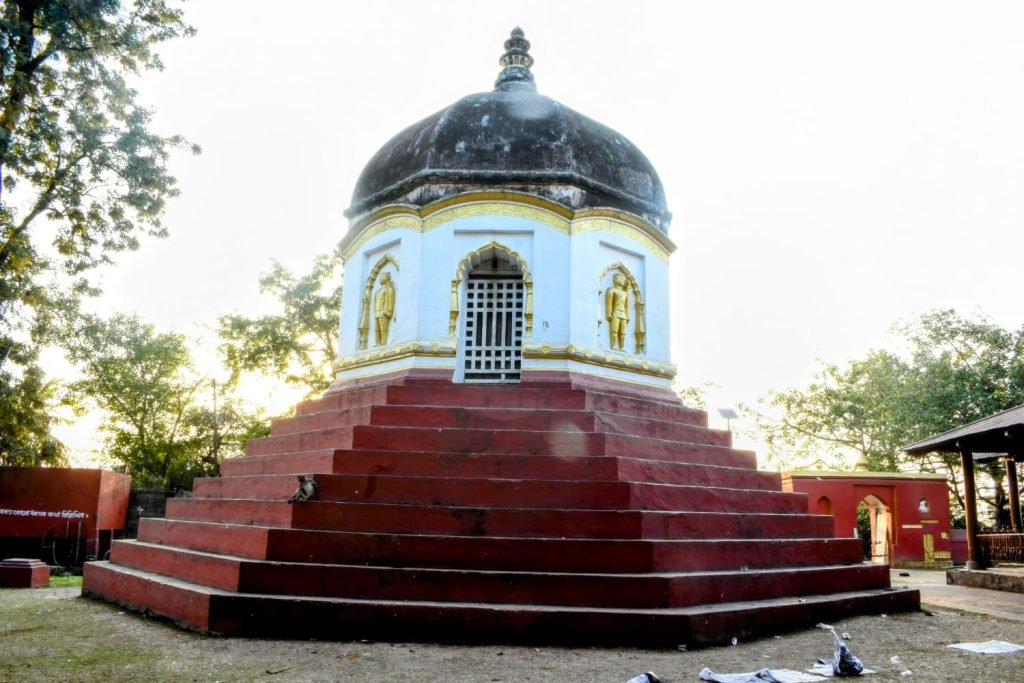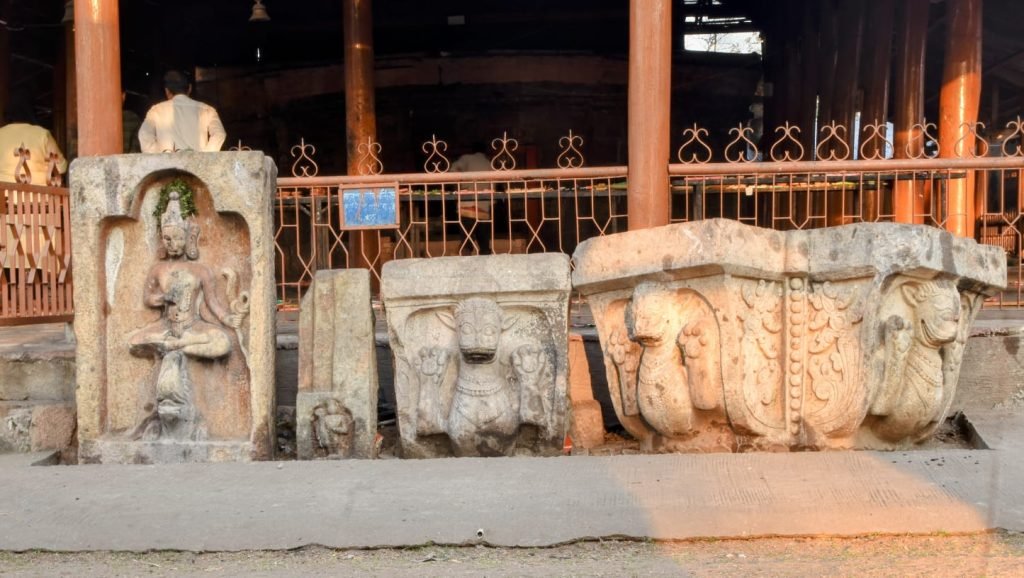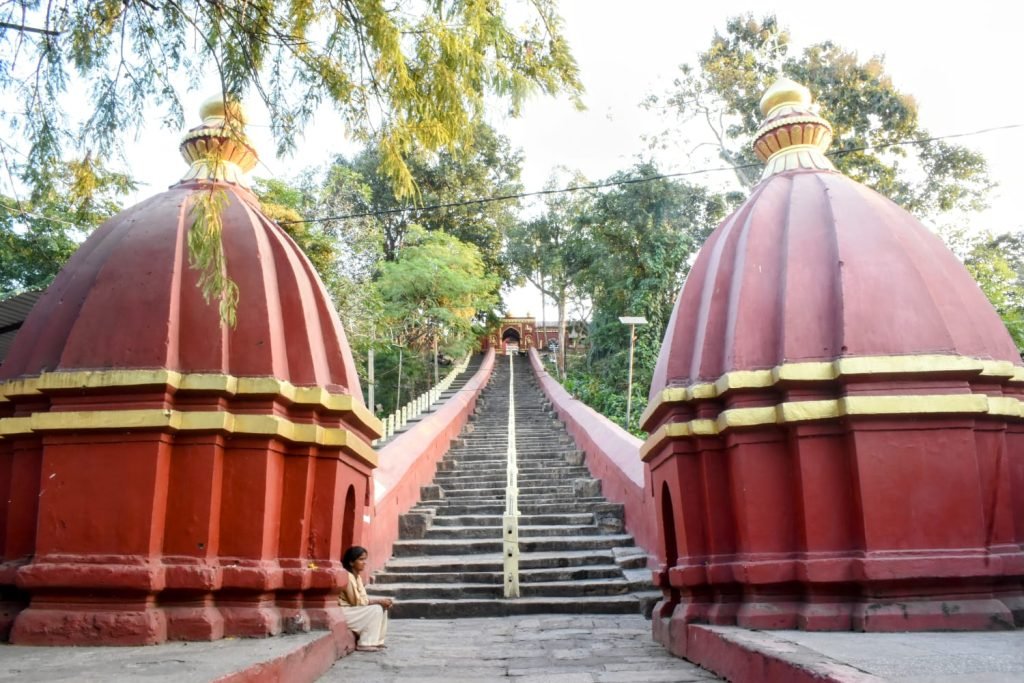Hayagriva MadhavaTemple, Hajo
This graceful and famous Vaisnava shrine of Hajo dedicated to Lord Visnu is popularly known as Hayagriva Madhava. Standing on an isolated hill, popularly known as Manikut Parvat, this temple was rebuilt in CE 1583 by Koch king Raghudeva (CE 1581- 1603), over the foundation of the ancient temple ruins of 10th- 11th century CE, as reflected in the plinth through mouldings of friezes of elephants (Gajatharas) and geometrical designs of low relief in the basement. The layout of the temple follows the original salient features and recesses of the earlier plan. The Nagara Sikhara of the temple is gracefully executed with the sculptures of various divinities of the Brahmanical pantheon over the garbhagriha and the flat roof of mandapa is connected through an antarala. The doorway of the mandapa is arched and its roof is supported by four massive pillars on the four corners.
Information courtesy: Archeological Survey of India, Guwahati Circle.
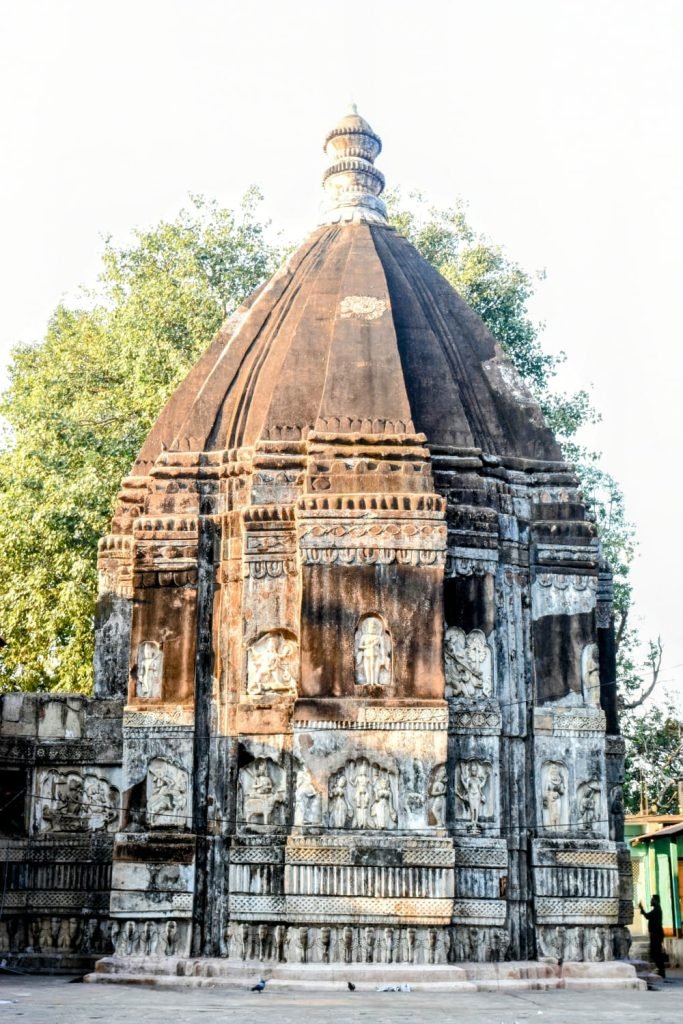
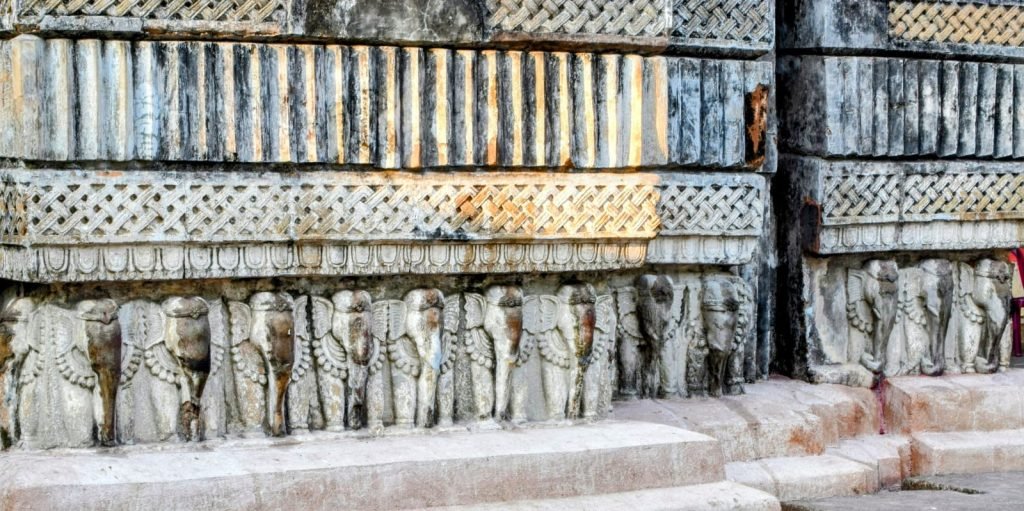
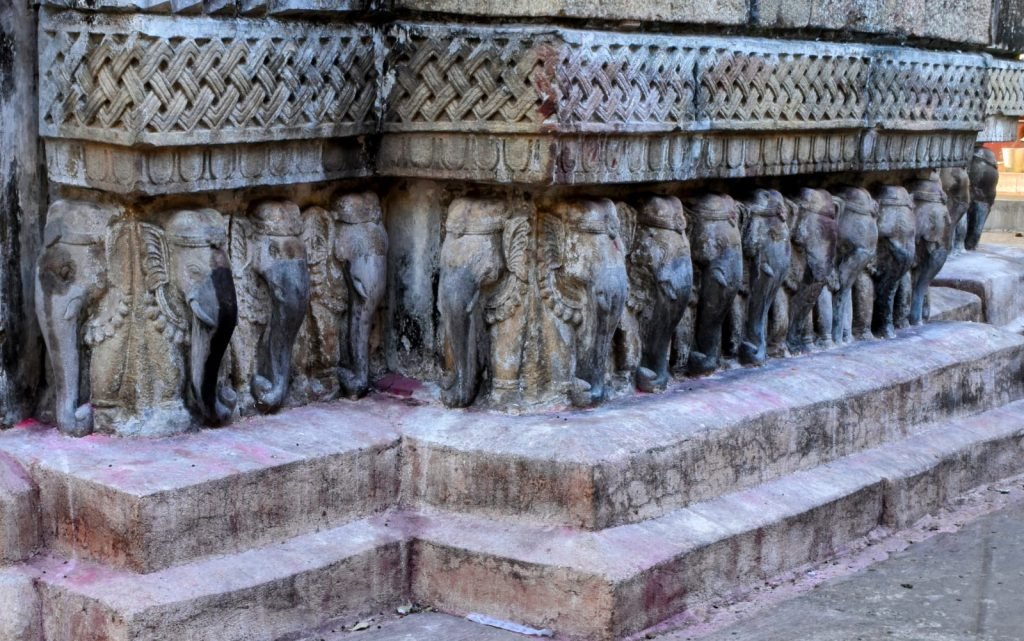

Some scholars attribute a Buddhist origin to the temple based on the row of caparisoned elephants sculpted along the plinth. These, they say, are reminiscent of the animal figures at the Buddhist caves of Ellora in Maharashtra. Some Buddhists believe that the temple was the site of the Buddha’s parinirvana.
Another structure adjacent to the main temple is called Doul Grisha. It is said to have been built by the Ahom king Pramatta Singha in 1750 AD. The festival Doul, similar to the colourful festival of Holi, is celebrated here on a grand scale every year.
A long stairway leads from the foot of the hill to a gateway that opens to the temple complex. All around the temple are numerous loose sculptures. Most of these sculptures stand testimony to the sculptural finesse attained by the artisans of Assam.
Information courtesy: Assam Travel Guide, Department of Tourism, Government of Assam.
